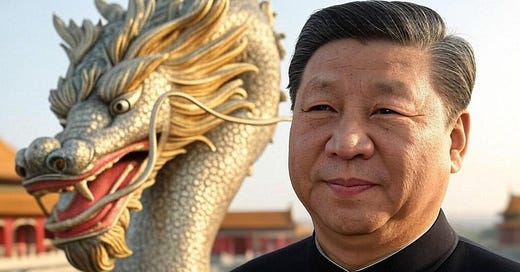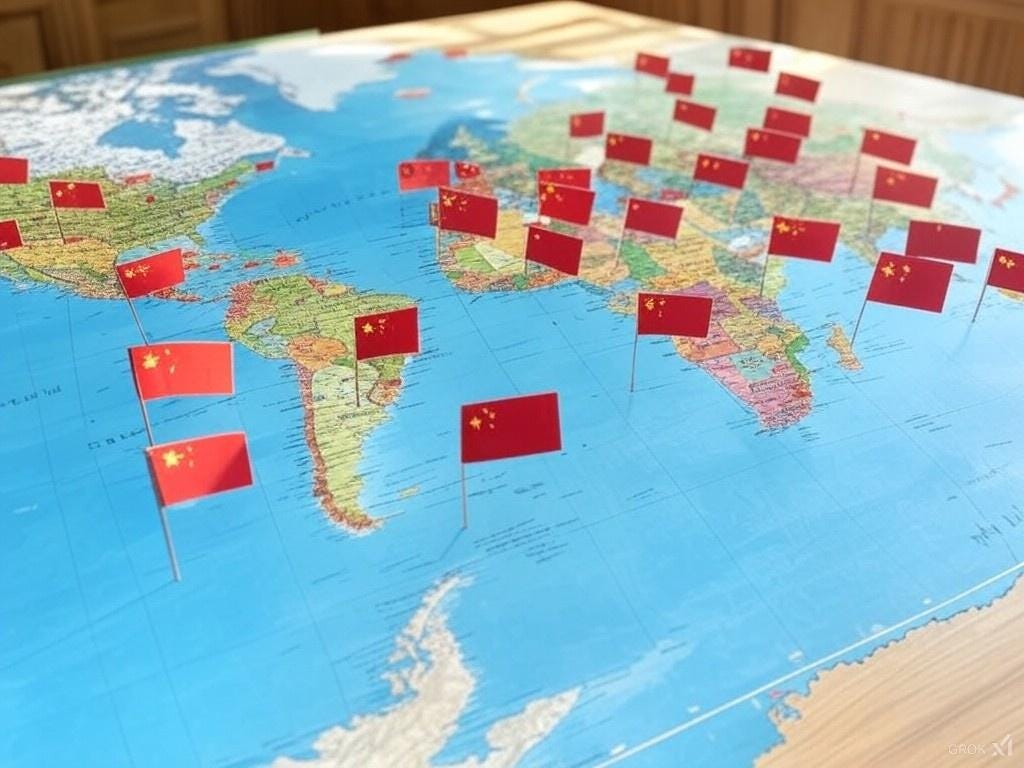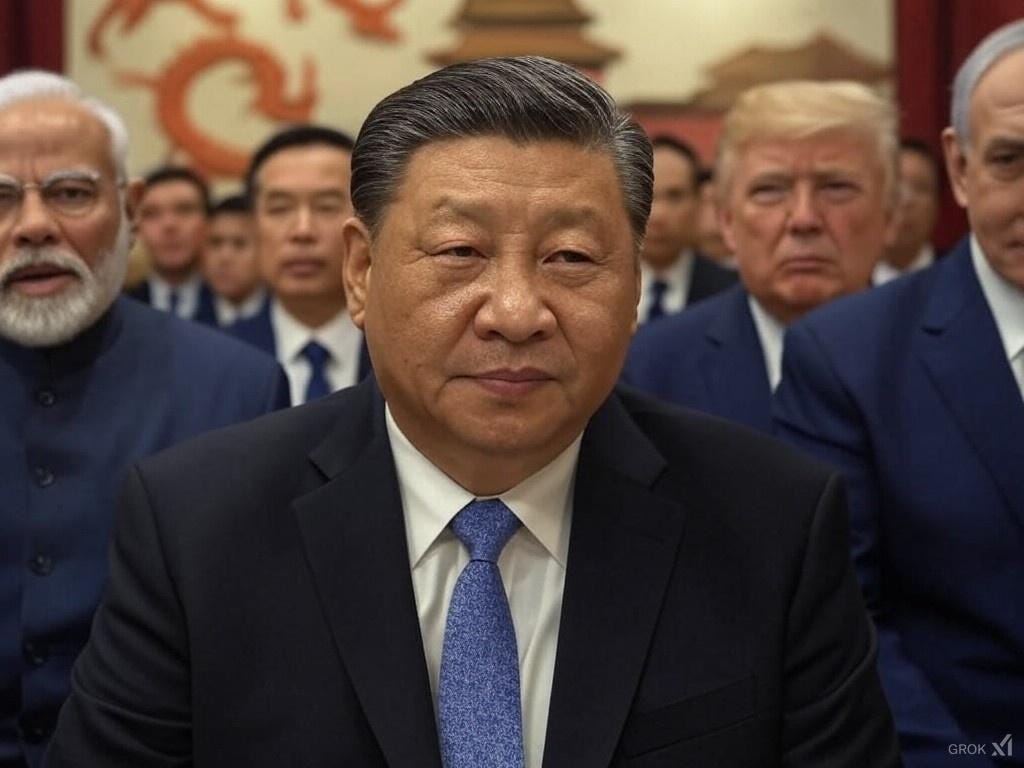#31: The rise and rise of China's state-owned enterprises!
As on date, Chinese state-owned enterprises (SOEs) account for over 60% of China's market capitalization.
As on date, Chinese state-owned enterprises (SOEs) account for over 60% of China's market capitalization.
So, prepare to delve into the story where SOEs have not only become titans in their domestic market but are now reshaping the contours of international trade and investment.
The narrative of Chinese SOEs began in the late 1970s with Deng Xiaoping's economic reforms, transitioning from a centrally planned economy to one that embraced market mechanisms while retaining state control over key sectors.
This shift was pivotal as it allowed SOEs to gradually evolve from bureaucratic entities into more commercially oriented corporations.
..
By the 1990s, reforms intensified, focusing on profitability and efficiency, with the government initiating the "grasp the large, let go of the small" policy, concentrating state resources in large, strategic SOEs while allowing smaller ones to privatize or merge.
And, much of this was made possible, starting with the establishment of the State-owned Assets Supervision and Administration Commission (SASAC) in 2003 to manage these giants, signalling a more professional and strategic approach to their management.
With SASAC's oversight, by 2008, the number of centrally managed SOEs was reduced from over 150 to 97, each strategically positioned in sectors critical to national interests.
By 2019, these entities represented 4.5% of the global economy, with 91 of them making it onto the Fortune Global 500 list in 2020.
This was also the period saw SOEs like China National Petroleum Corporation (CNPC) and State Grid Corporation of China (SGCC) starting to expand internationally, driven by China's "Going Out" strategy, which encouraged SOEs to seek overseas markets and resources.
By 2005, the global expansion was in full swing.
This became evident through acquisitions like CNPC's purchase of PetroKazakhstan for $4.18 billion in 2005, marking one of the first major overseas acquisitions by a Chinese SOE. This set the stage for a series of strategic investments abroad, particularly in energy and natural resources.
By 2010, SOEs accounted for over 80% of China's outward investment, with companies like China Communications Construction Company (CCCC) and China Railway Construction Corporation (CRCC) leading the charge in infrastructure projects across Africa, Latin America, and Asia.
This was part of China's broader geopolitical strategy, notably through the Belt and Road Initiative (BRI), launched in 2013, which aimed to build infrastructure connecting Asia with Europe and Africa, further facilitating the international expansion of SOEs.
Under the BRI, Chinese SOEs have been pivotal in constructing over 80% of new seaports globally since its inception, with projects in countries like Greece (Piraeus Port) and Pakistan (Gwadar Port), enhancing China's maritime influence and securing trade routes
The competitive advantages of Chinese SOEs are multifaceted.
Firstly, they benefit from government-backed financing, often through policy banks like the China Development Bank, which offer favourable loan terms not readily available to private or foreign competitors.
For instance, in the first 11 months of 2024 alone, SOEs invested 2 trillion yuan ($284 billion) via such low-cost funding in emerging industries, a year-on-year increase of 18.7%.
And, overall, Chinese SOEs have financed and built infrastructure in 138 countries, contributing to a total investment of around $1 trillion, positioning them as key players in global infrastructure development and influencing trade patterns significantly.
Secondly, they enjoy regulatory advantages, including exemptions from certain domestic regulations that might hinder private firms, giving them a unique position in both domestic and international markets.
However, this rise has not been without controversy.
Western nations, particularly the US and EU, have raised concerns about unfair competition, citing practices like subsidies, which they argue distort global markets.
The EU, for example, has been examining how to apply its merger control laws to Chinese SOEs, considering the unique corporate governance structures where the state's influence is significant.
This has led to increased scrutiny and regulatory adjustments, including new foreign investment screening mechanisms in Europe aimed at safeguarding strategic industries from potential SOE acquisitions.
It has also revised its state aid rules and implemented the Foreign Direct Investment Screening Regulation in 2020, specifically to address concerns about Chinese SOE acquisitions that might conflict with EU strategic interests or security.
And overall, EU has initiated over 10 investigations into Chinese investments by SOEs in 2024 alone, focusing on sectors like telecommunications and energy, where state support could give Chinese entities an undue advantage.
..
Geopolitically, the expansion of Chinese SOEs has introduced new dynamics.
In regions like Southeast Asia and Africa, where much of the BRI infrastructure is being built, there's a delicate balance between welcoming Chinese investment for development and concerns over debt sustainability and political influence.
While nations like Ethiopia have benefitted big from infrastructure development by SOEs like CCCC, many worry about the long-term implications of high debt levels associated with these projects.
The case of Sri Lanka's Hambantota Port, leased to China due to debt issues, exemplifies these concerns, highlighting a broader narrative of economic influence through SOEs.
Take India, where state enterprises like Indian Oil Corporation exist but are less dominant on the global stage, the scale and scope of Chinese SOEs are notably different.
Indian SOEs have been slower in international expansion, focusing more on domestic consolidation and less on global outreach, constrained by different policy priorities and economic strategies.
Sure, we do have Oil and Natural Gas Corporation (ONGC). But, it has made international forays but with a focus more on energy security rather than broad economic influence, with investments in countries like Sudan, Venezuela, Russia and Vietnam and many more.
And if we look at the US, the scenario is even different, with a more private sector-led economy.
And, the US’ approach to regulation, especially post-cold war, has been to ensure a level playing field, contrasting sharply with China's use of SOEs for strategic national interests, often leading to tensions over trade practices and security.
Looking forward, the trajectory of Chinese SOEs in global markets is bound to face both tailwinds and headwinds.
Tailwinds include continued government support, access to vast capital, and the sheer scale of China's market providing a springboard for international operations.
However, headwinds include increasing regulatory scrutiny from host countries, potential backlash against China's state capitalism model, and the need for SOEs to become more market-oriented to succeed globally.
The implications for global competition are profound. As SOEs grow, they not only become competitors to Western firms but also set the pace for how state involvement in business can be leveraged internationally. The best example is how China has used SOEs to corner the global mineral supply chain.
For example, while 80% of the world’s cobalt is mined in the Democratic Republic of Congo, 85% of which is mined by 15 Chinese companies, 13 of which are SOEs. And, all of that was made possible by a landmark 2008 deal between the two countries, where in Chinese companies get to mine and own the resources, while China invests and builds infrastructure for the poor country.
This has led to a rethinking of competition policy worldwide, with bodies like the OECD pushing for competitive neutrality principles to ensure that state enterprises compete on equal terms with private firms from all kinds of countries.
..
In conclusion, the rise of Chinese SOEs on the global stage is not just a story of economic expansion but one of strategic manoeuvring, regulatory evolution, and geopolitical positioning.
Understanding this growth is crucial, not only for recognizing the changing dynamics of global trade but also for anticipating the economic policies and competitive strategies that will shape the future of international markets.
As this dragon continues to decode its path, the world watches, learns, and sometimes, competes.
Best,
Jayant Mundhra








Very nice, very informative reports, sir could you teach us also how to make such outstanding reports.